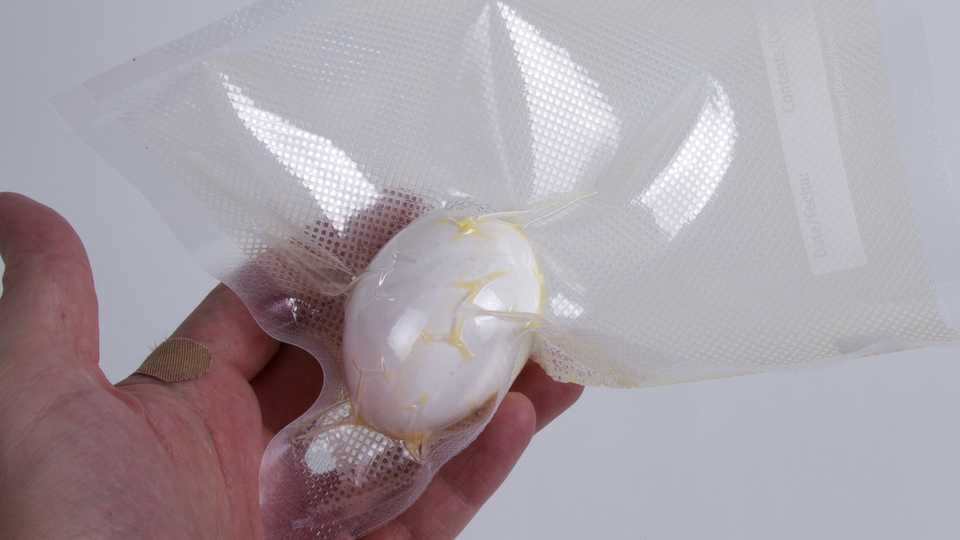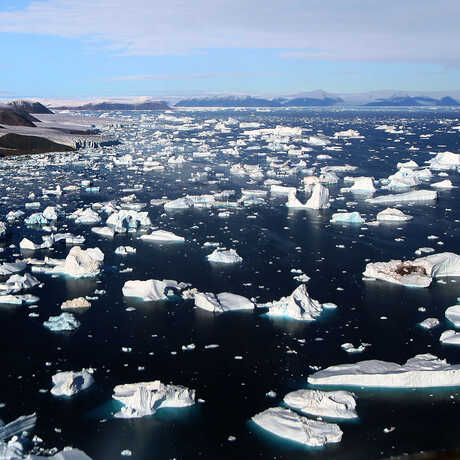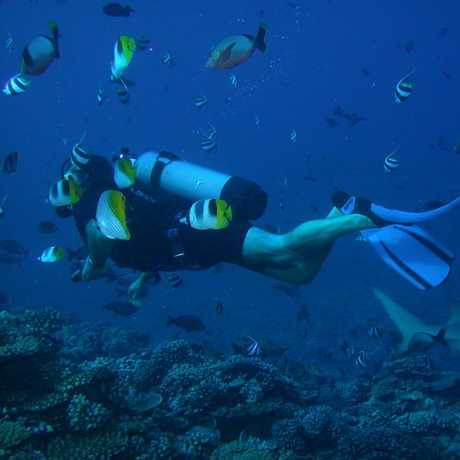What is air pressure? Although we don’t usually notice air pressure, the molecules that make up the surrounding air are constantly colliding with us from all different directions. Air pressure is the force of these collisions per unit area. In fact, we often measure pressure in pounds per square inch (psi). This activity helps students understand pressure and changes in pressure by experiencing air pressure in a new way.
What causes a person to be “shrink-wrapped” when the vacuum is turned on? In this activity, participants climb into a large trash bag (with their head and neck remaining outside!) and remove the air from inside of the bag using a household vacuum cleaner. Before the vacuum cleaner is turned on, there is an equal density of air molecules inside and outside the bag. As described above, the air molecules are colliding with the inside and outside of the bag with equal force per unit area.
When the vacuum cleaner is turned on, most of the air is removed from inside the bag. When the air inside the bag is removed, there is no longer equilibrium. The force of the air molecules colliding with the inside of the bag is now close to zero, but the air molecules colliding with the outside of the bag have the same force per unit area as before. The air pressure that is outside of the bag (atmospheric pressure is about 14.7 psi on the surface of the earth) is now unopposed by an equal force of air pressure inside the bag. Thus, the bag is not being sucked onto your body by the vacuum cleaner; rather, the bag is being pushed onto your body by the air outside of the bag. (See air pressure model.)
How is this related to the pressure change that a fish might feel when coming up from the “twilight zone”? The fish that come up from the deep water of the “twilight zone” experience a similarly dramatic change in pressure. Many fish have a gas-filled organ, called a swim bladder, which helps fish to stay buoyant in the water. Fish that live deep in the ocean have swim bladders with a certain density of air inside them. When these fish are brought up from the deep water to the shallower water at the surface, the pressure exerted by the surrounding water on the swim bladder decreases quickly. There is no longer equilibrium between the pressure of the air inside the swim bladder and the surrounding water. The air inside the swim bladder presses out, similar to the way the air outside of the trash bag pushes in on your body. (See swim bladder model.)


